10 start with P start with P

What parent hasn’t wondered “What do I do now?” as a baby cries or a teenager glares? Making babies may come naturally, but knowing how to raise them doesn’t. As primatologist-turned-psychologist Harriet J. Smith shows in this lively safari through the world of primates, parenting by primates isn’t instinctive, and that’s just as true for monkeys and apes as it is for humans.
In this natural history of primate parenting, Smith compares parenting by nonhuman and human primates. In a narrative rich with vivid anecdotes derived from interviews with primatologists, from her own experience breeding cotton-top tamarin monkeys for over thirty years, and from her clinical psychology practice, Smith describes the thousand and one ways that primate mothers, fathers, grandparents, siblings, and even babysitters care for their offspring, from infancy through young adulthood.
Smith learned the hard way that hand-raised cotton-top tamarins often mature into incompetent parents. Her observation of inadequate parenting by cotton-tops plus her clinical work with troubled human families sparked her interest in the process of how primates become “good-enough” parents. The story of how she trained her tamarins to become adequate parents lays the foundation for discussions about the crucial role of early experience on parenting in primates, and how certain types of experiences, such as anxiety and social isolation, can trigger neglectful or abusive parenting.
Smith reveals diverse strategies for parenting by primates, but she also identifies parenting behaviors crucial to the survival and development of primate youngsters that have stood the test of time.
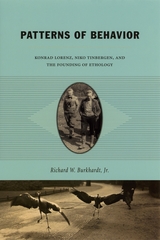
In Patterns of Behavior, Richard W. Burkhardt Jr. traces the scientific theories, practices, subjects, and settings integral to the construction of a discipline pivotal to our understanding of the diversity of life. Central to this tale are Konrad Lorenz and Niko Tinbergen, 1973 Nobel laureates whose research helped legitimize the field of ethology and bring international attention to the culture of behavioral research. Demonstrating how matters of practice, politics, and place all shaped "ethology's ecologies," Burkhardt's book offers a sensitive reading of the complex interplay of the field's celebrated pioneers and a richly textured reconstruction of ethology's transformation from a quiet backwater of natural history to the forefront of the biological sciences.
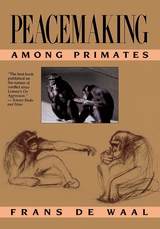
Does biology condemn the human species to violence and war? Previous studies of animal behavior incline us to answer yes, but the message of this book is considerably more optimistic. Without denying our heritage of aggressive behavior, Frans de Waal describes powerful checks and balances in the makeup of our closest animal relatives, and in so doing he shows that to humans making peace is as natural as making war.
In this meticulously researched and absorbing account, we learn in detail how different types of simians cope with aggression, and how they make peace after fights. Chimpanzees, for instance, reconcile with a hug and a kiss, whereas rhesus monkeys groom the fur of former adversaries. By objectively examining the dynamics of primate social interactions, de Waal makes a convincing case that confrontation should not be viewed as a barrier to sociality but rather as an unavoidable element upon which social relationships can be built and strengthened through reconciliation.
The author examines five different species—chimpanzees, rhesus monkeys, stump-tailed monkeys, bonobos, and humans—and relates anecdotes, culled from exhaustive observations, that convey the intricacies and refinements of simian behavior. Each species utilizes its own unique peacemaking strategies. The bonobo, for example, is little known to science, and even less to the general public, but this rare ape maintains peace by means of sexual behavior divorced from reproductive functions; sex occurs in all possible combinations and positions whenever social tensions need to be resolved. “Make love, not war” could be the bonobo slogan.
De Waal’s demonstration of reconciliation in both monkeys and apes strongly supports his thesis that forgiveness and peacemaking are widespread among nonhuman primates—an aspect of primate societies that should stimulate much needed work on human conflict resolution.


"[Phylogeny, Ecology, and Behavior] presents its arguments forcefully and cogently, with ample . . .support. Brooks and McLennan conclude as they began, with the comment that evolution is a result, not a process, and that it is the result of an interaction of a variety of processes, environmental and historical. Evolutionary explanations must consider all these components, else they are incomplete. As Darwin's explanations of descent with modification integrated genealogical and ecological information, so must workers now incorporate historical and nonhistorical, and biological and nonbiological, processes in their evolutionary perspective."—Marvalee H. Wake, Bioscience
"This book is well-written and thought-provoking, and should be read by those of us who do not routinely turn to phylogenetic analysis when investigating adaptation, evolutionary ecology and co-evolution."—Mark R. MacNair, Journal of Natural History
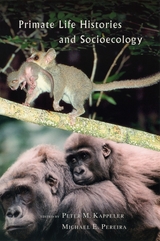
Exploring these issues and many others, the contributors to Primate Life Histories and Socioecology provide the first systematic attempt to understand relationships among primate life histories, ecology, and social behavior conjointly. Topics covered include how primate life histories interact with rates of evolution, predator pressure, and diverse social structures; how the slow maturation of primates affects the behavior of both young and adult caregivers; and reciprocal relationships between large brains and increased social and behavioral complexity. The first collection of its kind, this book will interest a wide range of researchers, from anthropologists and evolutionary biologists to psychologists and ecologists.
Contributors:
Paul-Michael Agapow, Susan C. Alberts, Jeanne Altmann, Robert A. Barton, Nicholas G. Blurton Jones, Robert O. Deaner, Robin I. M. Dunbar, Jörg U. Ganzhorn, Laurie R. Godfrey, Kristen Hawkes, Nick J. B. Isaac, Charles H. Janson, Kate E. Jones, William L. Jungers, Peter M. Kappeler, Susanne Klaus, Phyllis C. Lee, Steven R. Leigh, Robert D. Martin, James F. O'Connell, Sylvia Ortmann, Michael E. Pereira, Andy Purvis, Caroline Ross, Karen E. Samonds, Jutta Schmid, Stephen C. Stearns, Michael R. Sutherland, Carel P. van Schaik, and Andrea J. Webster.

"A book that properly illuminates in rich detail not only developmental and socioecological aspects of primate behavior but also how and why certain questions are asked. In addition, the book frequently focuses on insufficiently answered questions, especially those concerned with the evolution of primate sex differences. Fedigan's book is unique . . . because it places primate adaptations and our explanation of those patterns in a larger intellectual framework that is easily and appropriately connected to many lines of research in different fields (sociology, psychology, anthropology, neurobiology, endocrinology, and biology)—and not in inconsequential ways, either."—James McKenna, American Journal of Primatology
"This is the feminist critique of theories of primate and human evolution."—John H. Cook, Nature
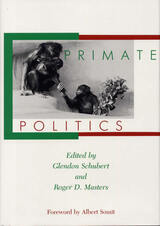
The first book to focus on the political behavior of primates also undertakes to compare human social behavior with that of nonhuman primates.
The editors contribute probing introductory essays to each of the three major parts of the volume in addition to their article-length introductory and concluding chapters. In his conclusion, Masters indicates directions for future work.
Part I is devoted to theoretical clarification of the interrelationships between the study of primates and humans. Part II presents two examples of comparisons between animal and human social behavior that throw valuable light on contemporary political and social systems. Part III focuses more precisely on contemporary human politics, providing two concrete examples of ethological perspectives on human political behavior. In both cases, nonverbal cues studied by primatologists are shown to illuminate the dynamics of human politics.
Contributors include: Nicholas G. Blurton-Jones, Frans B. M. de Waal, Basil G. Englis, Jane Goodall, Bruno Latour, Roger D. Masters, Gregory J. McHugo, Elise F. Plate, Thelma E. Rowell, Glendon Schubert, James N. Schubert, Shirley S. Strum, and Denis G. Sullivan.
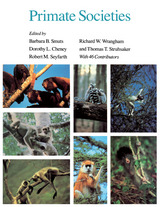
information on primate socioecology and its theoretical and
empirical significance, spanning the disciplines of behavioral
biology, ecology, anthropology, and psychology. It is a very rich
source of ideas about other taxa.
"A superb synthesis of knowledge about the social lives of
non-human primates."—Alan Dixson, Nature

READERS
Browse our collection.
PUBLISHERS
See BiblioVault's publisher services.
STUDENT SERVICES
Files for college accessibility offices.
UChicago Accessibility Resources
home | accessibility | search | about | contact us
BiblioVault ® 2001 - 2024
The University of Chicago Press









